If the dog you’re walking is barking at another dog, what should you do?
Although dogs sometimes bark out of excitement or as a greeting, the habit can be annoying and disruptive. But why do dogs bark at each other while on the leash, and how can you cure your pup of the habit?
Further training or teaching your pup to focus on you can help, as can keeping on the move or even taking a different route. Sometimes, attending training classes can be a good idea so you can learn how your pooch is feeling and predict when he’ll start barking.
Read our guide for tips on walking a dog that barks at other dogs!
Tips On Walking A Dog That Barks At Other Dogs
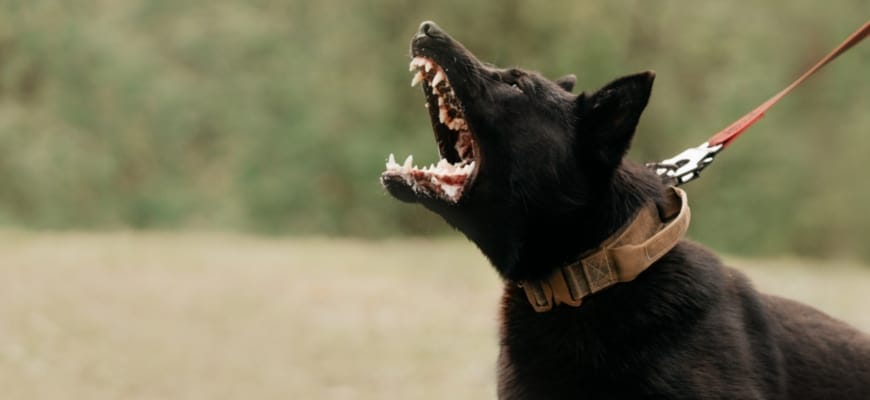
Let’s start by explaining how you can tackle the problem of your pup barking at other dogs while you’re out walking him on his leash.
Learn To Understand Your Dog’s Mood
Your first task is to understand how your dog feels when he barks at other dogs. Until you know why your dog is barking, it will be almost impossible to know how to tackle the problem.
- Your dog could be barking in greeting.
- Your dog could be barking out of sheer excitement.
- The barking could be aggressive, reactive behavior.
- Your dog could be barking to demand attention.
There’s also the possibility that the pup is barking out of discomfort or even pain. That could be due to some medical condition you’re unaware of or even because his harness or collar is uncomfortable.
So, before you do anything else, we advise that you have your pooch checked over by your vet. If you’re struggling to deal with your barking pup, it’s a good idea to talk to a professional animal behavior expert for more advice.
Change Your Route
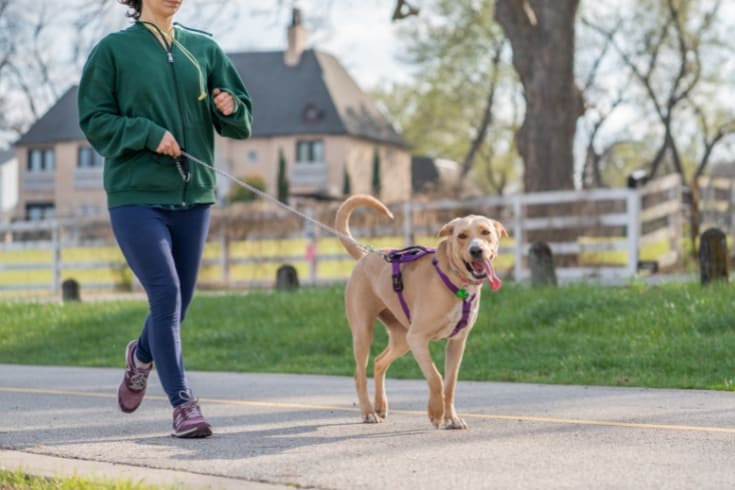
Sometimes, you can reduce your dog’s barking at other pups by simply changing the route you take while out on walks.
If your regular route takes you through a busy area that’s packed with other dogs are people, changing tack and taking a walk through a quieter location with lighter traffic can help.
Avoid The Issue
In addition to changing your regular walking route, another easy way to prevent barking is to avoid the trigger points that encourage the barking behavior.
For example, if you know that your furry friend will bark as soon as he comes close to another dog, take evasive action as soon as you see another pup approaching. That can mean crossing the street, turning around, walking in the opposite direction, or moving behind a physical barrier, such as a fence or car.
Try to prevent the behavior by being vigilant and taking action well in advance.
Keep Calm And Carry On!
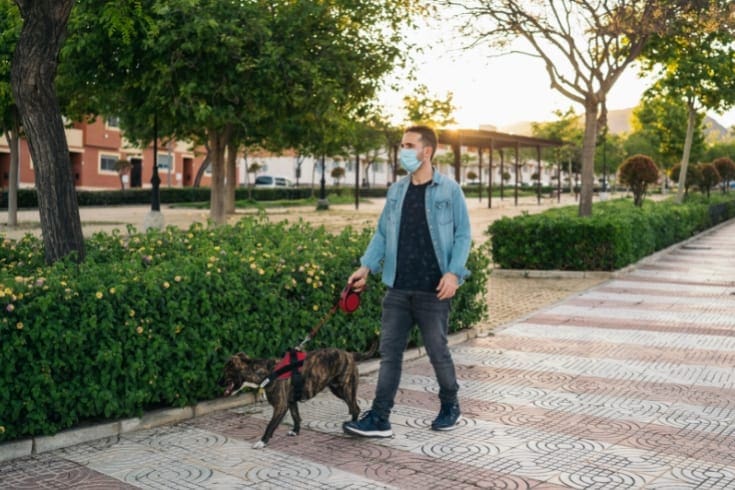
Dogs are very aware of the mood and feelings of their handler, so you must do your utmost not to become anxious or stressed when your pooch starts barking.
Following a few near misses when other dogs attacked my dog, I became anxious as soon as I saw another dog approaching us. Although it was incredibly difficult, I had to try to remain calm so that my furry friend didn’t pick up on my mood and become defensive if another dog came close.
I found that singing or chatting to my pup helped to encourage calmer behavior in both of us and kept me in the headspace I needed to be in to manage the situation better.
Leash Control
It’s a natural behavior for dog owners to shorten their dog’s leash when they see another dog approaching.
You might even pull on the leash to keep your pet close to you, especially if your pup tends to lunge at the other pup or start biting his leash. However, that only makes the situation worse, as you’re unwittingly communicating to your pooch that the other dog is a threat that should be feared.
Instead, try to mitigate your dog’s behavior by using a no-pull harness. That way, you can keep the leash at the correct length without pulling or shortening it unduly.
Keep Moving!
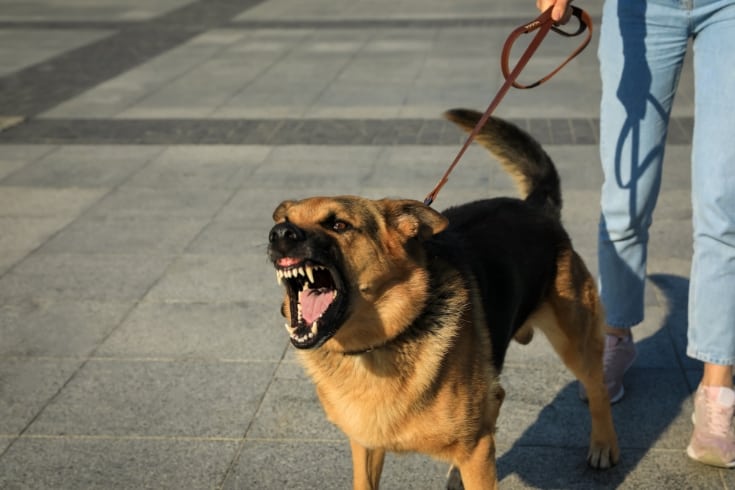
Your dog’s walk can be the highlight of his day, so it’s only natural that he might get excited and resort to barking. Some dogs bark at other pups if they’re anxious in the hope that the strange dog might go away.
If your pup tends to stop and start barking at other dogs, keep your dog leashed and carry on walking. Sometimes, that thoughtful behavior on your part can be enough to reduce the barking or rule it out altogether.
Eyes On Me!
A useful alternative training technique can be to keep your dog’s attention on you throughout the walk.
Teach your pup to look at you on cue, pay attention to you while you’re walking, and regularly check in with you, too. That will help to distract your dog from other pups and passers-by and can also help to strengthen the bond between you.
Use reward-based, positive training techniques, and remember to reward your pup with his favorite treats when he demonstrates calm behavior when walking past another dog.
Sniff Training Tactics
Most dogs are pretty food-motivated, and feeding treats to your pet can be all it takes to distract him from barking at other dogs.
Before you venture out to the park, teach your dog to seek and find hidden treats in your home. Use a verbal cue to encourage your pup to look for the treats. Once your furry friend finds a treat, he gets his reward!
When you see another dog approaching, try scattering a handful of high-value treats on the ground and tell your pooch to find them. That means your pup has his nose down and is busily sniffing out his reward instead of barking at another dog.
Back To School
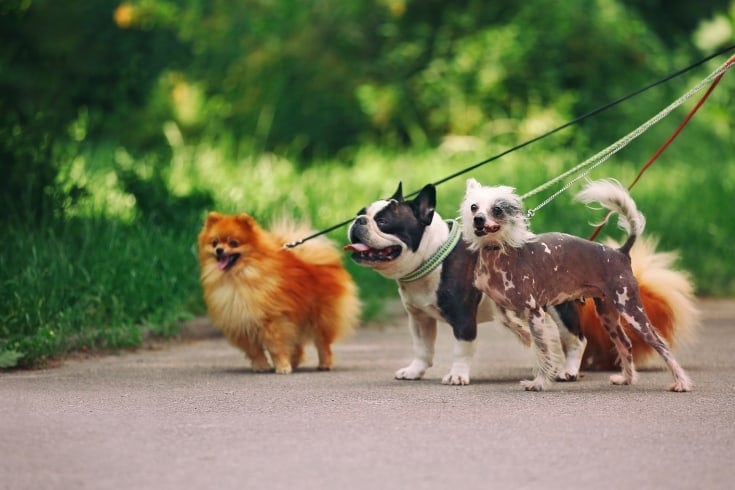
Attending proper training classes can be an excellent way of socializing your dog and teaching him to get along with other dogs without barking at them.
Most vet clinics run or can recommend training classes for puppies, adult dogs, and their owners. At those training classes, your pup will learn how to interact correctly with other pups without barking in what would usually be stimulating situations.
Work With Your Dog
You can change your dog’s response to other dogs by working with your pup.
Start by taking your pup to a parking lot at a park where other dogs and their owners gather.
Stand calmly with your dog at a distance where your pet can see another dog but keep away from traffic lanes so that dogs aren’t walking close to you. Give your pup a few of his favorite treats when he sees another dog but not when the strange dog leaves. That teaches your pooch that not reacting to the presence of another pup will earn him a reward.
If your dog starts barking and lunging toward the other dog, you’re too close. Move further back until your dog becomes comfortable with the distance, and then try getting a few feet closer. You’ll need to be patient because you want to avoid placing your dog in an overwhelming situation.
Reward Calm Behavior
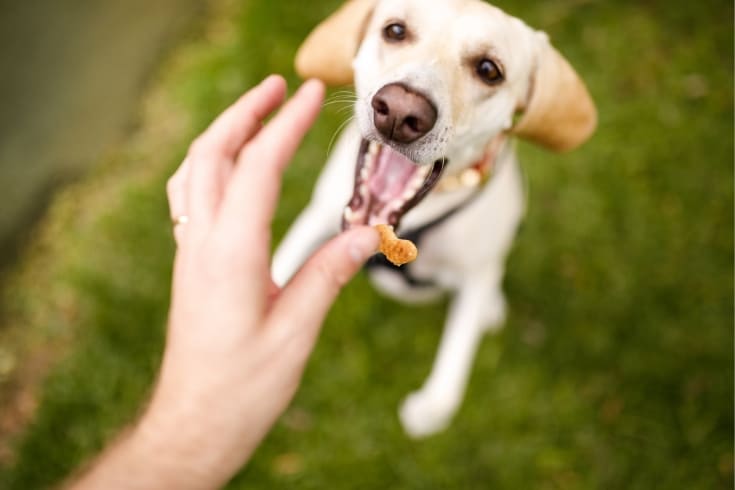
The idea of rewarding your pup when he’s calm around other dogs teaches your pet that he doesn’t need to get overexcited or afraid when in the presence of another dog. You don’t need to use treats to reward your pooch. You could substitute a food reward for a favorite toy or a fuss.
Good timing is essential when rewarding your pet. Whenever your dog remains calm when he has another dog in his sight, immediately reward your pet. It doesn’t matter if your pup is simply looking at you, watching the other dog with no reaction, or sniffing the ground around him. As long as your pup remains calm, you should reward him.
Why Does My Dog Bark At Other Dogs?
The action you take to cure your dog of his habit of barking at other dogs depends on the reason for his barking behavior.
Communication
Barking and vocalization are ways in which dogs communicate with each other.
Your pup might bark to warn another dog to keep off his territory, or he might bark to alert the other dog to his presence and invite interaction.
Reactive Barking
Some dogs are very reactive on the leash, meaning they might lunge, bark, or become aggressive. Often, simply seeing another dog on the street is a fear trigger that provokes a reaction.
Generally, reactive behavior, such as lunging, barking, or jumping up, is borne out of fear. Reactive barking usually becomes an ingrained habit for one of the following reasons:
- Inadequate socialization during puppyhood
- Bad experiences with other dogs
- Inherited temperament, genetics
- Poor training practices
Reactive behavior can usually be overcome by training your pup. Consult an experienced behaviorist for more advice.
Greetings!
If you have a friendly, sociable dog that loves to spend time playing with his canine chums, your pet might get frustrated when he’s confined to his leash and start barking purely because he can’t say “hi” to his friends.
Territorial Behavior
A dog will often bark to defend their territory from strangers, including dogs. So, if your pup begins kicking off as soon as another dog walks past your house, your pet is simply telling the perceived interloper that he’s too close to your pup’s personal space.
Remember that dogs regard other areas as their own personal territories, such as your car or even a place where you regularly go for walks. That can lead to unwanted barking behavior.
My first dog, Bruce, would go crazy whenever anyone came close to my car. That was a real issue for us when I was sitting in the car judging at dressage events. Whenever someone came to the car to collect the score sheets, Bruce would go ballistic! Eventually, I trained my self-appointed guardian to chill out and get over himself by offering him a treat to distract him when someone came over to the car.
Interestingly, and fortunately, my pup didn’t bark at the horses and riders passing close to my car.
Social Barking
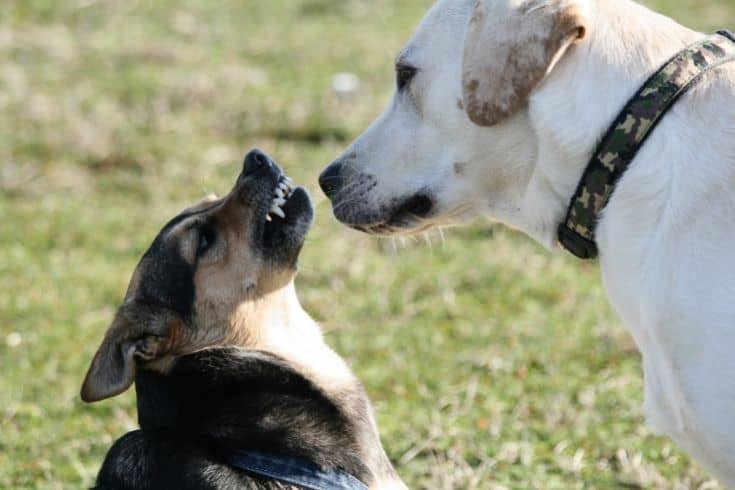
Dogs are highly social creatures, and barking can often be your dog’s way of telling other dogs that he’s around.
If the barking is accompanied by a waggy tail, a relaxed body, and “play bowing,” your pup is most likely just being friendly.
Copycat Barking
Copycat barking is also sometimes called socially facilitated barking and happens just because your dog hears other dogs barking, too.
Socially facilitated vocalization is very common in social animals, including dogs, horses, apes, wolves, and even people! Basically, socially facilitated vocalization sees animals joining in purely because they hear other animals whooping, barking, or howling.
It’s assumed that this behavior is common to dogs because of their wolf pack ancestry. If the Alpha wolf began barking, the whole pack would join the chorus to frighten off a rival pack entering the territory.
Attention-Seeking
Another common reason that dogs bark at other dogs is to seek attention. Your dog will do the same thing when he wants your attention too.
For example, if your pup thinks it’s dinner or walkies time, he might bark at you to remind you. Some dogs get so excited that it can be almost impossible to get their leash on!
FAQs
In this part of our guide, we answer a few more of your questions about why your dog barks at other dogs while you’re out walking.
Q: Why does my friendly dog bark at other dogs on walks?
A: If your dog is friendly but always barks at other dogs while you’re out on walks, he most likely wants attention.
Barking is a type of behavior that dogs use to communicate with each other. So, yipping and yapping at other dogs could be your furry friend’s way of saying, “Hi! Come and play with me!”
Q: Should I ignore my dog barking at other dogs?
A: Many trainers advise dog owners to ignore their dogs’ barking. That’s well-intentioned advice, although it’s rather incomplete, as it depends on why the dog is barking in the first place.
If the dog is demanding attention, looking away from him and ignoring his behavior teaches your dog that barking at you won’t get him the response he wants. However, if your dog is barking aggressively at another dog, ignoring him won’t fix the problem.
Q: Should I let my dog interact with other dogs on walks?
A: Dogs are highly social creatures that need interaction with other dogs to be happy. That’s just normal dog behavior. However, we advise caution when allowing dogs to interact while on a leash.
- The other dog is a stranger to you and your pup, and you have no idea what his reaction will be. The other dog might feel threatened and respond aggressively to your pup.
- Dogs and their owners can become entangled in the leashes with chaotic results!
- Dogs like to greet each other from the side, and that natural behavior is not always possible when the dogs are on a leash.
- A dog can feel trapped when restrained on a leash. That means the pup can’t run away if he feels vulnerable or afraid of the other dog. In those circumstances, your dog might even resort to snapping at the stranger, resulting in a full-scale scrap.
- Allowing two dogs to greet each other while on leashes can lead to pulling and other bad behavior. You don’t want your dog to forget his leash manners, and allowing him to lunge, jump up, and prance around can reinforce potentially dangerous behavior issues as acceptable.
Instead, try allowing your dog and his canine chums to socialize in a fenced yard or at the dog park, where they can romp and play off-leash.
Final Thoughts
Did you enjoy our guide on what to do if your dog barks at other dogs while out walking on his leash? If you found the article helpful, please take a moment to share it!
Learn to understand your dog’s body language so that you can predict his behavior and take steps to control it. Try taking a different route on walks to avoid busy areas, consider taking your pup to obedience training classes, or employ a professional dog trainer if you’re struggling.
First and foremost, work out why your dog barks when he sees another dog. Once you understand the reason for your dog’s behavior, you can take action to correct it.
How did you cure your dog’s habit of barking at other pups? Tell us your story in the comments box below.
